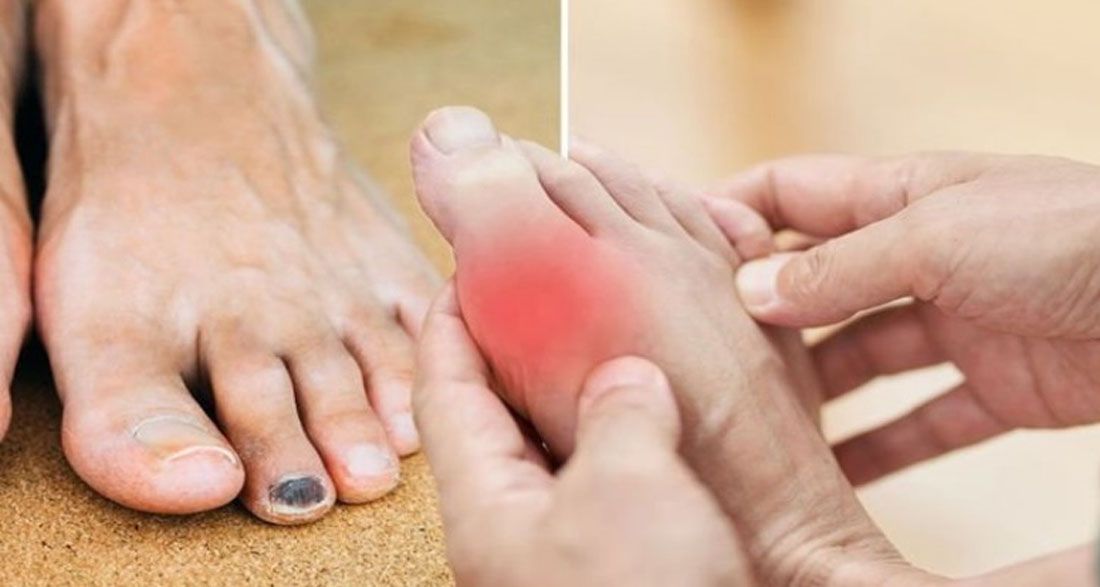The Sneaky Signs of High Cholesterol in Your Legs
Did you know that high cholesterol can be a silent troublemaker in your body? It’s a waxy, fat-like substance that your liver produces to help build cell membranes, make vitamin D, and balance hormones.
But here’s the catch: cholesterol doesn’t dissolve in water, so it travels through your bloodstream in tiny packages called lipoproteins. When cholesterol combines with lipoproteins that are high in fat and low in protein, it forms low-density lipoproteins (LDL), which can be harmful.
This often happens when you eat a lot of unhealthy fatty foods and don’t get enough exercise. Over time, LDL can build up in your arteries, blocking and narrowing them, which can lead to serious problems like heart attacks and strokes.
How High Cholesterol Affects Your Legs
The scariest part about high cholesterol is that it usually doesn’t show any symptoms until it’s reached a dangerous level. This is why regular blood check-ups are so important!
When cholesterol levels rise significantly, they can start affecting your legs, especially the Achilles tendon. Here are some signs to watch for that might indicate your cholesterol is too high:
1. Leg Pain
One of the first signs of high cholesterol is leg pain. When cholesterol levels rise, blood and oxygen struggle to reach your legs, particularly the lower parts of your feet. This can make your legs feel heavy and fatigued.
“I thought my leg pain was just from getting older, but it turned out to be my cholesterol,” shared Mark, a 45-year-old who recently changed his diet. People with high cholesterol often experience cramps and pain in their legs, especially when walking. Even a short stroll can feel like a marathon!
2. Cramps in the Legs
Leg cramps can also be a sign of rising cholesterol levels. These cramps often occur in the ankles and can be particularly bothersome at night. “I would wake up with terrible cramps and didn’t know why,” said Lisa, who started paying more attention to her health.
If you find yourself waking up with cramps, try sitting with your legs dangling off the bed for some relief. It’s a simple trick that can help ease the discomfort.
3. Changes in Skin and Nail Color
Have you noticed changes in the color of your skin or nails? Poor blood circulation due to high cholesterol can cause your nails to change color and become thicker. The lower part of your foot may also appear shiny.
“I thought it was just a normal aging thing, but my doctor told me it was a sign of poor circulation,” said Sarah, who now keeps a close eye on her health. If you see these changes, it’s time to take action!
4. Cold Feet
Do your feet feel cold even in warm weather? High cholesterol can cause your feet to feel chilly all year round, just like on a cold winter day.
“I couldn’t understand why my feet were always freezing, even in summer,” said Tom, who learned that this could be a sign of peripheral artery disease (PAD). If your feet feel cold to the touch, don’t ignore it—talk to your doctor!
The Importance of Regular Check-Ups
The most dangerous thing about high cholesterol is that it can go unnoticed until it starts affecting your daily life. Regular blood tests are crucial for diagnosing and preventing high cholesterol.
“I never thought I needed to check my cholesterol until my doctor insisted. Now I’m so glad I did!” exclaimed Emily, who has made lifestyle changes to keep her cholesterol in check.
Take Action!
If you notice any of these signs in your legs, it’s essential to consult with a healthcare professional. They can help you understand your cholesterol levels and suggest lifestyle changes or treatments to keep your heart healthy.
Remember, taking care of your cholesterol is taking care of your overall health!
What do you think about these signs of high cholesterol? Have you experienced any of them? Share your thoughts in the comments below! Your health is important, and staying informed can make a big difference!

